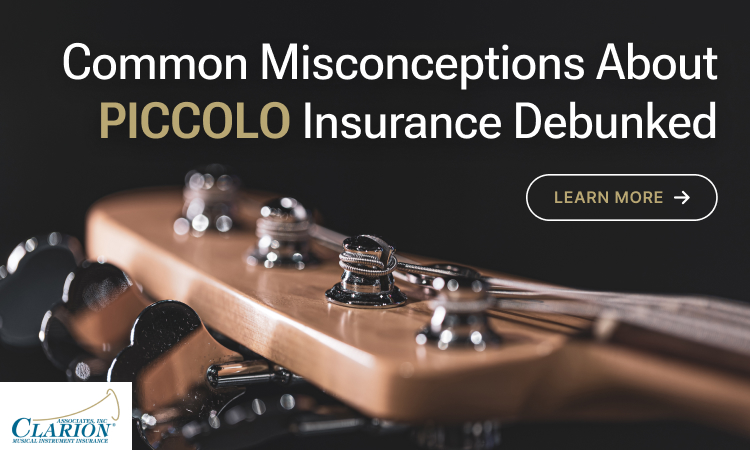The oboe, loved for its expressive voice and intricate keywork, is a cherished instrument for many musicians. However, like any valuable possession, it is more or less susceptible to damage, theft, or loss. So, having insurance protection provides peace of mind. Knowing that your financial investment is protected in case of unforeseen circumstances is a sigh of extreme relief.
This blog delves into the key considerations for an oboe insurance plan. By understanding your options, you can make informed decisions to ensure your beloved oboe is properly covered.
Insurance Plan: Why must your gear have one?
Regular home insurance or renter’s insurance policies might cover instruments a bit, but there are usually limits. On the contrary, musical instrument insurance is different. It is designed specifically just for musicians and offers broader protection. Here’s why a dedicated plan is crucial:
- Comprehensive Coverage: It goes beyond basic protection against theft and fire. It can cover accidental damage, loss, vandalism, and even weather-related events.
- Agreed Value Coverage: This guarantees a predetermined payout in case of a total loss, reflecting the instrument’s true value. Standard policies might only offer depreciated value compensation.
- Worldwide Protection: Your instrument is covered no matter where you travel, whether for performances or competitions.
- Replacement Cost Coverage: Ensures you receive enough money to replace your instrument with a comparable one, especially important for high-end instruments.
- Additional Coverage Options: Some policies offer add-ons like coverage for reeds, accessories, sheet music, or even liability protection in case someone gets injured by your instrument.
Insurance Cost: What Factors to Count in?
The premium for your oboe insurance will depend on several factors:
- Value of Your Instrument: High-end professional oboes will have higher premiums compared to student models.
- Coverage Level: More comprehensive coverage with features like agreed value will cost more.
- Deductible: A higher deductible lowers your premium, but you’ll have to pay more upfront in case of a claim.
- Your Location: Areas with higher crime rates may result in slightly higher premiums.
- Your Age and Experience: Younger musicians may face slightly higher rates due to perceived higher risk.

Insurance Provider: Choose the Right Connect
Finding the right insurance company for your oboe requires research and careful consideration. Read on the essential steps that will help you find the right insurance partner:
- Research about Companies Specializing in Musical Instruments: These service providers typically understand the unique needs of musicians and offer tailored coverage options.
- Get Quotes from Multiple Providers: Compare coverage details and premiums to find the best value for your needs.
- Read the Policy Wording Carefully: Understand exclusions, limitations, and claims procedures before finalizing your policy.
- Ask Questions: Don’t hesitate to ask the insurance company about any aspects of the policy you’re unsure about.
Protecting Your Oboe: Going Beyond Insurance
While insurance provides financial protection, there are steps you can take to minimize the risk of damage, theft, or loss to your oboe:
- Proper Handling and Storage: Invest in a sturdy case that protects your instrument from bumps and falls. Maintain proper humidity levels for your oboe and store it securely when not in use.
- Regular Maintenance: Schedule regular professional maintenance for your oboe to ensure optimal performance and catch minor issues before they become major problems.
- Security Measures: Never leave your oboe unattended in public places. Consider using a cable lock when leaving it at a music stand during performances.
- Documentation: Keep detailed records of your oboe, including purchase receipts, appraisals, and photos. These pieces of paper may come up as very crucial when filing a claim.
Conclusion
Musical instrument insurance is an investment worth considering for any musician who values their instrument – whether it makes your livelihood or not. By understanding the coverage options, and factors affecting cost, and choosing the right insurance provider, you can ensure your oboe is protected against unforeseen events.
Remember, having an insurance policy in place is just one component of the jigsaw puzzle. Taking proactive steps to care for and secure your oboe will go a long way in ensuring its longevity.








